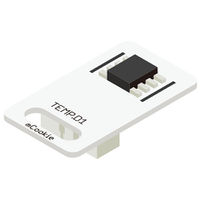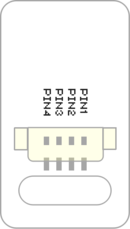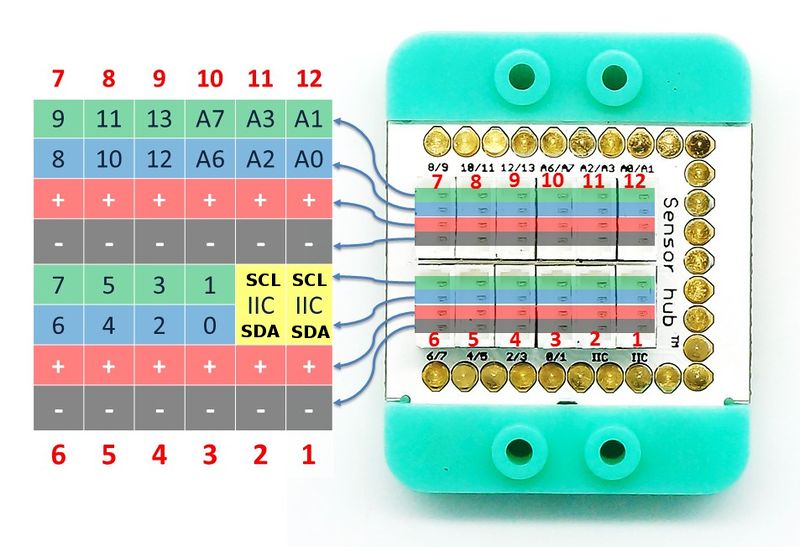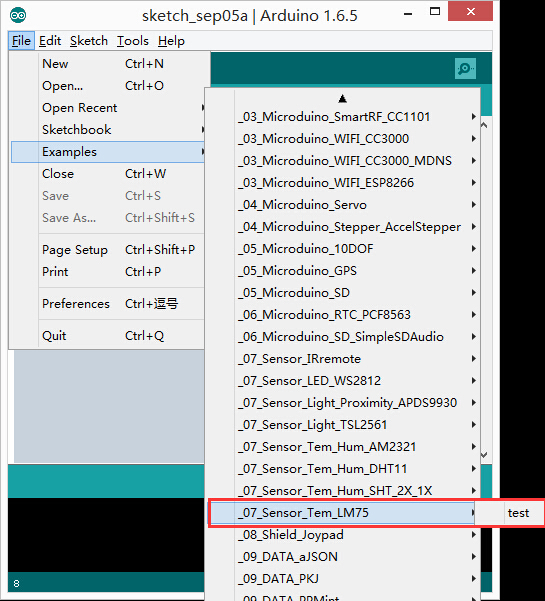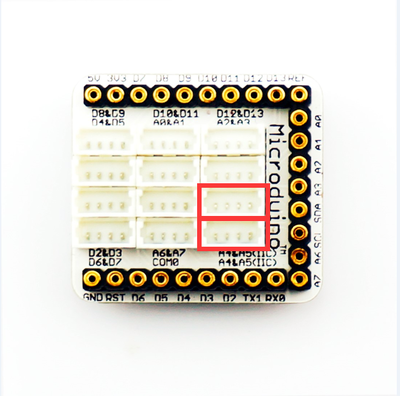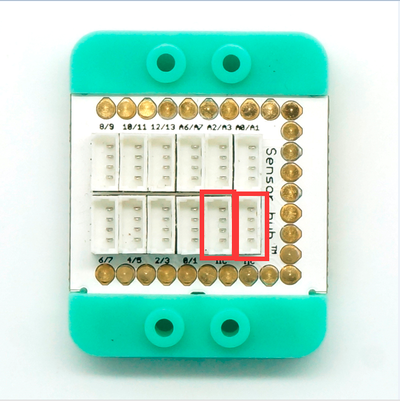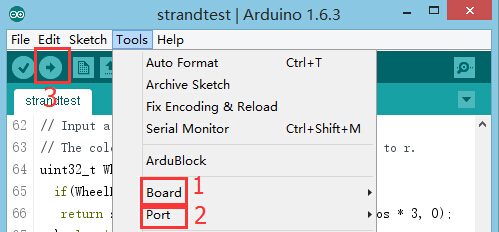|
|
| Line 55: |
Line 55: |
| | | | |
| | ===Program=== | | ===Program=== |
| − | *Open the program “test” in the library. | + | *Open the program "test" in the library. |
| | [[file:mCookie-LM75Test.JPG|thumb|800px|center]] | | [[file:mCookie-LM75Test.JPG|thumb|800px|center]] |
| | *include <lm75.h> Call the library function of LM75 temperature sensor. | | *include <lm75.h> Call the library function of LM75 temperature sensor. |
| Line 61: |
Line 61: |
| | *termo.setResolution(TempI2C_LM75::ten_bits); Set the display to decimal numbers. | | *termo.setResolution(TempI2C_LM75::ten_bits); Set the display to decimal numbers. |
| | *Serial.print(termo.getTemp()); Display the output temperature. | | *Serial.print(termo.getTemp()); Display the output temperature. |
| − |
| |
| | | | |
| | ===Hardware Setup=== | | ===Hardware Setup=== |
|
Microduino-LM75is digital temperature detection sensor module.
LM75 is a temperature sensor produced by National Semiconductor of which the output voltage is Celsus scale.
Instruction of Sensor Pins
|
|
- Pins of the sensor:
- PIN1: GND
- PIN2: VCC
- General signal pins:
- PIN3(IO1): digital/analog signal
- PIN4(IO2): NC(null)
- Special signal pins:
- If it is IIC: IO1/IO2 are respectively SDA/SCL.
- If it is soft serial port: IO1/IO2 are respectively tx/rx.
|
Microduino sensor can communicate with core module through the connection with Microduino-Module Sensor Hub.
|
Features
- Adopts LM75 temperature whose address is optional.
- With high accuracy and sensitivity.
- With low power consumption, long service life and good stability.
- With wide working voltage.
- With small size which is easy to install.
Specification
- Electric specification
- Working voltage: 2.8V~5.5V
- Input device
- Technical parameters
- Accuracy: temperature 0.125℃
- Measurement arrange: -55℃~+125℃
- Size
- Size of the sensor: 5mm*5mm
- Size of the board: 20mm*10mm
- 1.27mm-spacing 4Pin interface
- Connection
- Interface: I2C
- Pin instruction: GND, VCC, signal 1 and signal 2, the signal is IIC signal, so IIC interface is needed to receive the signal, and it can be connected to the pin 1 and 2 of sensor hub.
Document
Development
Preparation
- Confirm that you have set up the development environment of Microduino, otherwise please refer to : Microduino Getting started
- Core selection
Program
- Open the program "test" in the library.
- include <lm75.h> Call the library function of LM75 temperature sensor.
- TempI2C_LM75 termo = TempI2C_LM75(0x48,TempI2C_LM75::nine_bits); Define TempI2C_LM75 object.
- termo.setResolution(TempI2C_LM75::ten_bits); Set the display to decimal numbers.
- Serial.print(termo.getTemp()); Display the output temperature.
Hardware Setup
- Connect the sensor with the IIC port of sensorhub through patch cord.
Microduino-Sensorhub
mCookie-Hub
- Connect the core and Sensorhub and LM75 together, and then connect them to the computer with USB cable.
- Choose the right board card and COM port, and download directly after compiling. Refer to AVR Core: Getting Started
- Open Arduino IDE, choose File→Examples→Microduino→Sensor_Tem_LM75→test sample program, and choose the right board card in Tools→Board, and then compile.
- Choose the right port in Tools→Serial Port of Arduino IDE, and then download the program directly.
- After download you can open the serial monitor, and the console will print out the configuration information of the sensor, and then display the current temperature in cycle.
Application
It can be used in environment temperature detection, and as temperature switch to control the air conditioner, fans and so on.
Purchase
History
Gallery
|
